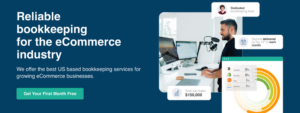
The world of ecommerce has witnessed unprecedented growth over the past decade, with online shopping becoming the new norm for consumers across the globe.
While this growth presents countless opportunities for ecommerce businesses to expand their horizons, the key question that often arises is, “Is it still possible to achieve profitable growth in ecommerce?”
The ecommerce landscape is continually evolving, and with it, the challenges and opportunities that businesses face.
In this blog post, we will explore the factors that determine profitability in ecommerce, and strategies for achieving profitable growth.
Understanding Profitability in Ecommerce
Profitability is the holy grail for businesses, and it’s no different in the world of ecommerce. However, achieving profitability in ecommerce can be a complex endeavor due to various factors that influence it.
Before we investigate the factors influencing profitability, let’s establish a clear definition of profitability.
It’s essential to recognize that profitability isn’t merely a monetary figure. Instead, it should be seen as the relentless pursuit of maximizing margin on every product you sell.
This approach entails putting forth the utmost effort to attain the highest possible profit margin. By doing so, businesses can not only aim for profitable growth but also lay the foundation for scaling their operations while optimizing margin.
To truly grasp the concept of maximum margin, we must first gain a comprehensive understanding of the factors that impact it.
Let’s take a closer look at these factors:
Pricing Strategy
Setting the right prices is fundamental to margin maximization. Strategic pricing is essential for maximum returns. Ecommerce businesses need to strike a balance between competitive pricing and maintaining healthy profit margins.
Regularly reviewing pricing or automated repricing tools strategies and making data-driven adjustments can help achieve this balance.
Pros: Effective pricing strategies can significantly boost profit margins, provide a competitive advantage, drive revenue growth, enhance customer perception, and offer adaptability in responding to market dynamics.
Cons: Accurate cost metrics are essential for a comprehensive understanding of profit margins, and without them, making pricing decisions based on incorrect margins can be detrimental to the business.
Cost Management
One of the fundamental aspects of profitability in ecommerce is effective cost management. This includes not only the cost of goods sold (COGS) but also operational costs.
Businesses need to optimize their operations to minimize costs while maintaining the quality of their products and services.
COGS, being an expense that sellers have significant control over, wields the most influence on the bottom line.
Ironically, it often remains overlooked by most sellers who prioritize revenue generation over profit preservation.
Continuously identifying avenues to reduce COGS while simultaneously increasing profits is the key to maintaining a competitive edge in the ever-evolving ecommerce landscape.
Pros: Effective cost management in ecommerce can increase profit margins, provide transparent financial data for informed decision-making, and lead to better overall profitability
Cons: Effective cost management can be challenging without access to necessary data and is often time-consuming, leading some sellers to prioritize revenue generation as a quicker solution to financial challenges.
The problem is you can’t spend your way out of an unprofitable SKU.
Common Mistakes:
1. Managing Cost Per Unit and Invoices on Spreadsheets: Many sellers struggle with effectively managing their cost per unit and invoices, often relying on cumbersome spreadsheets.
2. Neglecting Supplier Negotiations: Failing to identify opportunities to negotiate better prices and terms with suppliers can erode profit margins.
3. Overlooking Logistics and Freight Costs: Some sellers don’t explore multiple logistic, and freight forwarding options or maintain a list of reliable freight forwarders for competitive quotes.
4. Lack of Clarity on Supply Chain Costs: Not fully comprehending the costs from the supplier to the warehouse and failing to allocate these expenses per SKU can impact profitability.
5. Incomplete Understanding of Logistics Costs: Some sellers merely store logistics cost data without fully grasping its implications or differentiating between the lean unit cost and return on investment.
6. Inadequate Visibility on Cost of Goods: Failing to have a clear view of the cost of goods line item on the profit and loss statement can lead to missed profit opportunities.
7. Giving too much control to Automations and AI: While advancements in automation and AI are promising, relying entirely on these technologies without human oversight can lead to potential errors. It’s essential to have human management to ensure accuracy and address any unexpected issues in your operations and financial data.
8. Blind Trust in Amazon’s Accuracy: Relying solely on Amazon’s inventory management without monitoring pick and pack fees can result in unnecessary expenses.
9. Failure to Pursue Reimbursements: Neglecting to seek reimbursements for lost or damaged inventory and not reinvesting this recovered capital into growth activities like advertising and inventory replenishment.
Landed costs, often overlooked, are a critical metric within your control to safeguard and enhance profit margins by identifying opportunities to reduce cost per unit without compromising product quality.
By following our simple strategies, one of our clients increased profitability by 3.40% for a Net Profit Increase of $97,667.01.
Advertising

Advertising and Marketing: Monitoring the efficiency of marketing campaigns at the SKU level is essential for allocating resources to the most cost-effective channels and tactics, as understanding the precise cost of advertising per SKU is crucial for achieving profitable growth.
The ultimate performance metric for SKU-by-SKU analysis is TaCOS (Total Advertising Cost of Spend).
Pros: In terms of scalability, having a granular understanding of spending at the SKU level and the percentage allocated to advertising allows sellers to make informed decisions about increasing their advertising budget without compromising their profit and profit margin objectives.
Cons: In the absence of a clear understanding of spending at the SKU level, it becomes nearly impossible to accurately predict profit outcomes.
For Maximum Margins
To achieve maximum margin, a successful strategy hinges on three key components: a well-defined pricing strategy, precise and efficient Cost of Goods Sold (COGS) management, and effective advertising campaigns.
Scaling without addressing these fundamental components can lead to lost profits and the illusion of revenue growth, while the bottom line remains unhealthy.
What is the Solution for Profitable Growth in Ecommerce?
It’s no longer sufficient to focus solely on revenue generation; the key lies in preserving as much of your earnings as possible. Excel spreadsheets are no match for this task, which is why we built SellerVue.
SellerVue is specifically crafted to help sellers widen the gap between marketplace expenses and revenue, ultimately enabling you to retain a more substantial portion of your hard-earned money.
Now, how does this relate to the concept of scaling in the right order? We’ve identified crucial metrics and common pitfalls that impede profit retention.
The funds left on the table due to inaccuracies in cost per unit, overcharges by Amazon, unmanaged variable fees, ineffective pricing strategies, and suboptimal PPC management don’t merely represent a financial loss.
These errors also impact your ability to launch new products, execute successful ad campaigns, and expand your team.
Compound interest operates in both directions, and failure to recover as much money as possible affects the pace at which you can scale profitably.
Our philosophy for achieving profitable business growth revolves around a specific sequence of priorities:
1. Maximize Profit Margins: Streamline your operations to ensure you retain the highest possible earnings from each sale while also recovering as much reimbursement as possible.
2. Optimize Business Operations: Enhance efficiency across every process, ensuring each one operates at its peak effectiveness.
3. Utilize the extra capital and refined systems to scale your operations, thereby scaling your profits without any leaks.
With these critical elements in place, you can scale up your business without the worry of losing profits along the way.
One critical concept to keep in mind as you navigate the growth and scaling of your business is that most of you didn’t embark on this entrepreneurial journey to become experts in number crunching.
You started your businesses with a passion for creating and delivering products or services. It’s essential to remember your core purpose.
To scale effectively, sellers must recognize the importance of assembling the right team.
By having the right people in place, sellers can optimize efficiency and allocate time and resources towards revenue-generating activities that propel their business forward.
Sellers should not allow themselves to be bogged down by the intricacies of number crunching.
This is precisely why tools like SellerVue exist – to help sellers manage profitability efficiently.
By delegating the financial aspects to experts like Ecombalance, sellers can reclaim their time and focus on what truly matters: growing their business and pursuing their entrepreneurial passions.
What Is EcomBalance?

EcomBalance is a monthly bookkeeping service specialized for eCommerce companies selling on Amazon, Shopify, Ebay, Etsy, WooCommerce, & other eCommerce channels.
We take monthly bookkeeping off your plate and deliver you your financial statements by the 15th or 20th of each month.
You’ll have your Profit and Loss Statement, Balance Sheet, and Cash Flow Statement ready for analysis each month so you and your business partners can make better business decisions.
Interested in learning more? Schedule a call with our CEO, Nathan Hirsch.
And here’s some free resources:
- Monthly Finance Meeting Agenda
- 9 Steps to Master Your Ecommerce Bookkeeping Checklist
- The Ultimate Guide on Finding an Ecommerce Virtual Bookkeeping Service
- What Is a Profit and Loss Statement?
- How to Read & Interpret a Cash Flow Statement
- How to Read a Balance Sheet & Truly Understand It
Final Thoughts
This article was crafted with the aim of helping you achieve unprecedented profitability.
Whether you’re gearing up for the approaching holidays, considering selling your business in the new year, planning for a future sale, or simply committed to maximizing your profits, the central message remains the same…
Strive to be as profitable as possible.
Your profitability not only impacts your immediate success but also sets the stage for a more prosperous and sustainable future.
So, whether your goals involve selling your business or not, the key takeaway is the same – prioritize and pursue profitability to secure your financial success.









